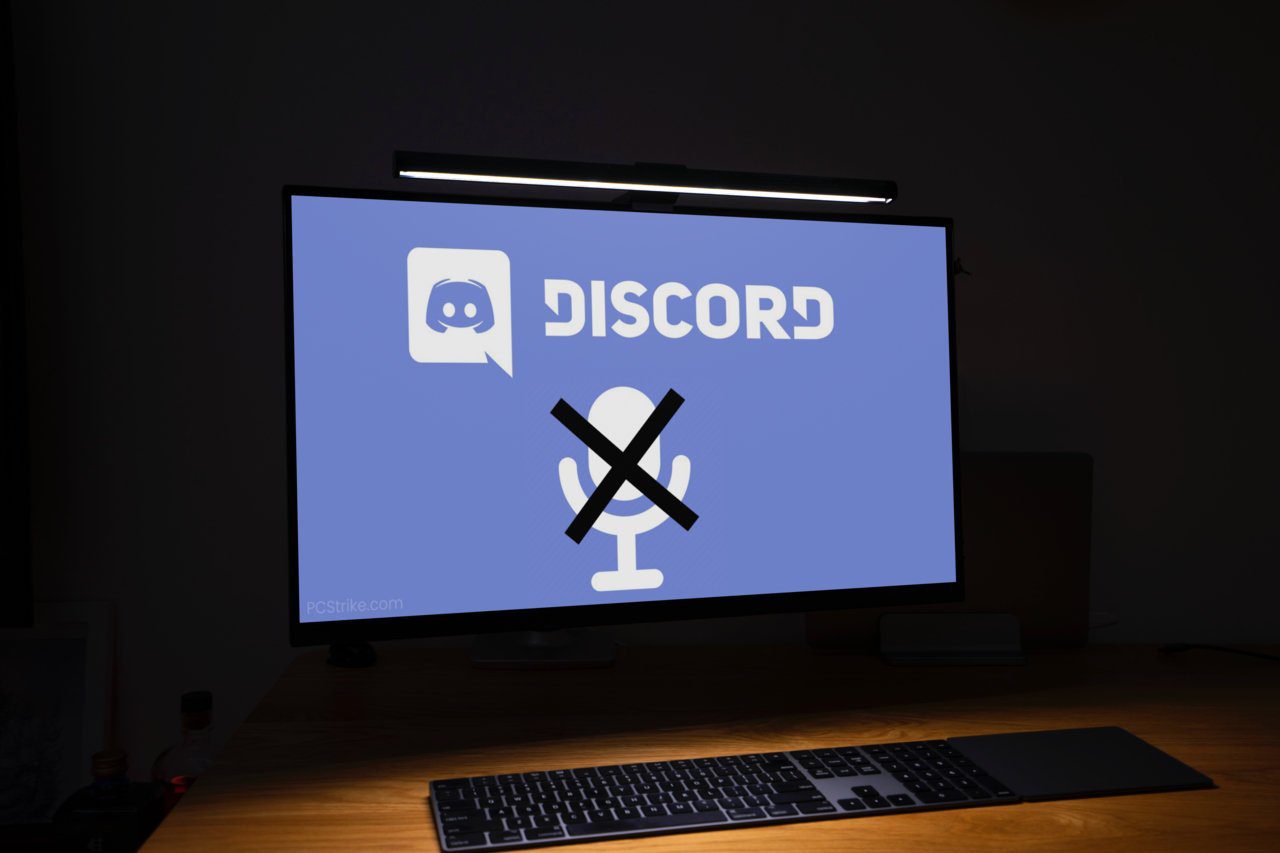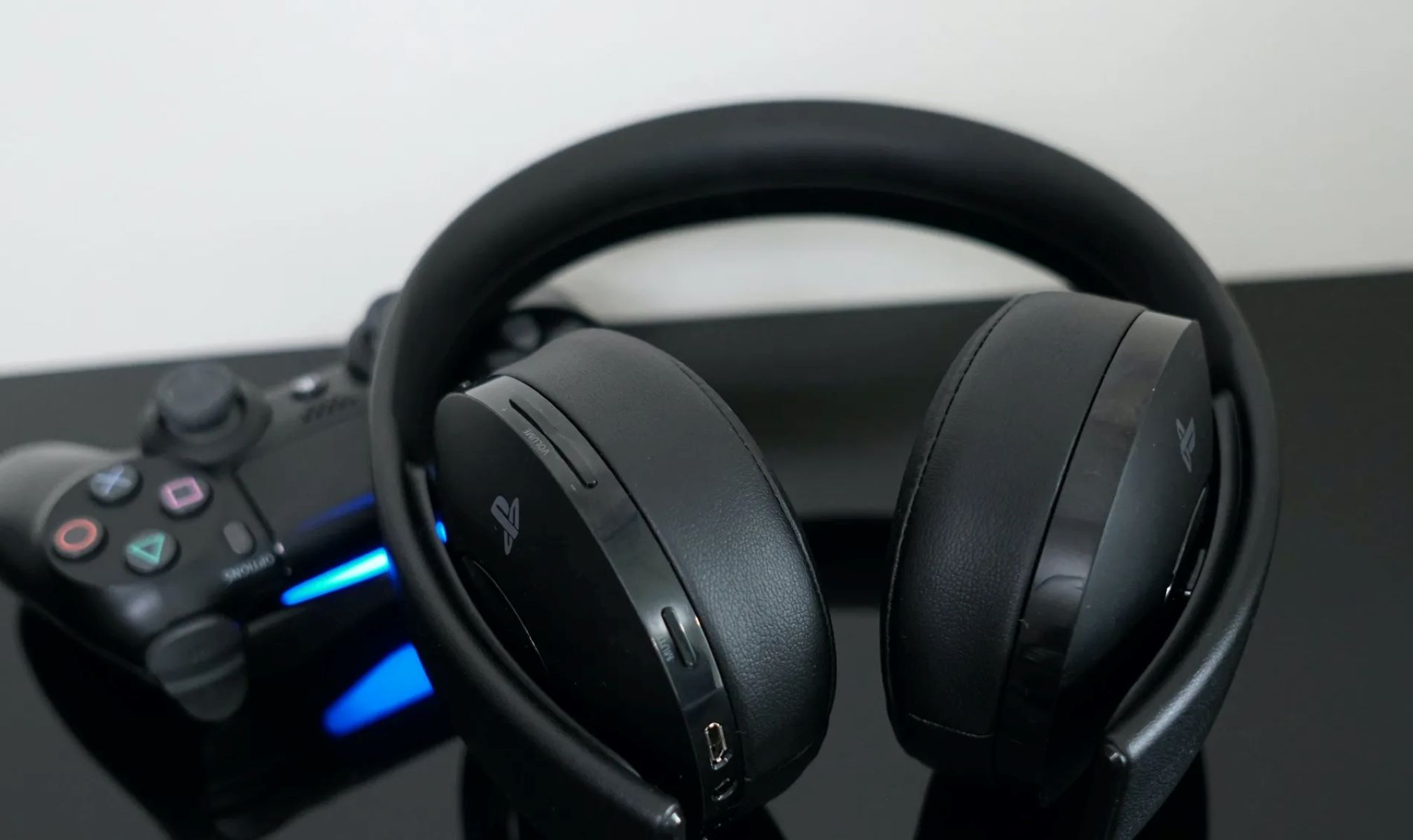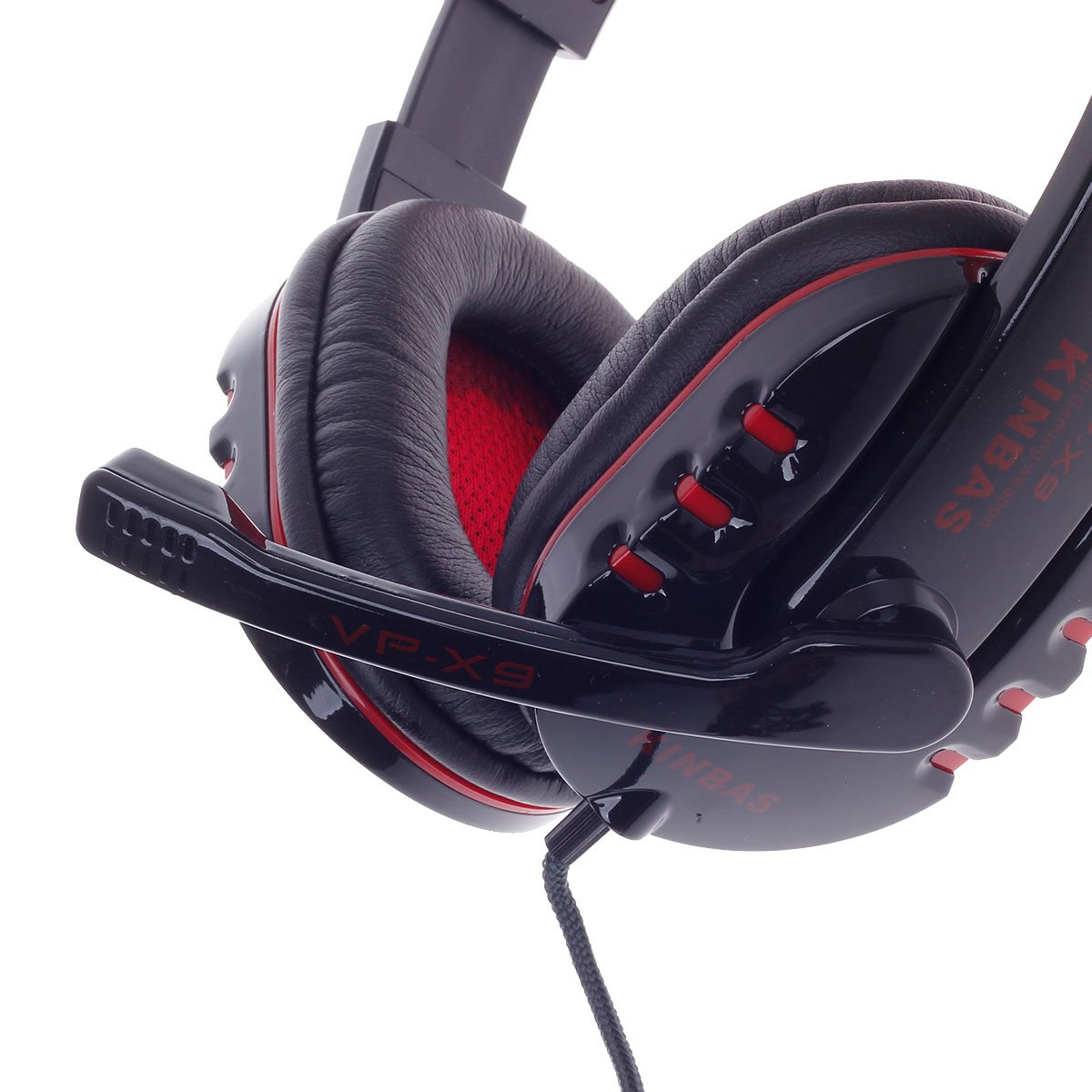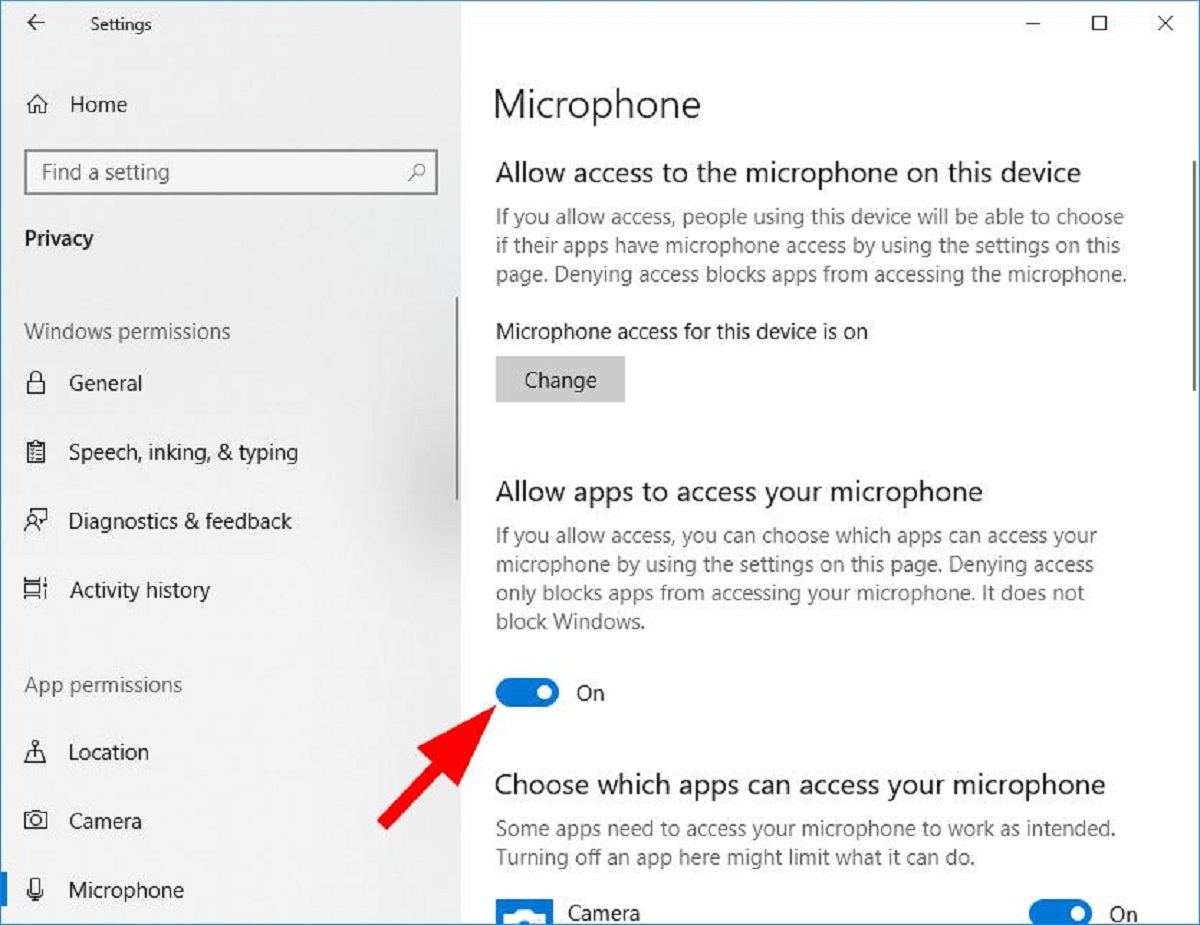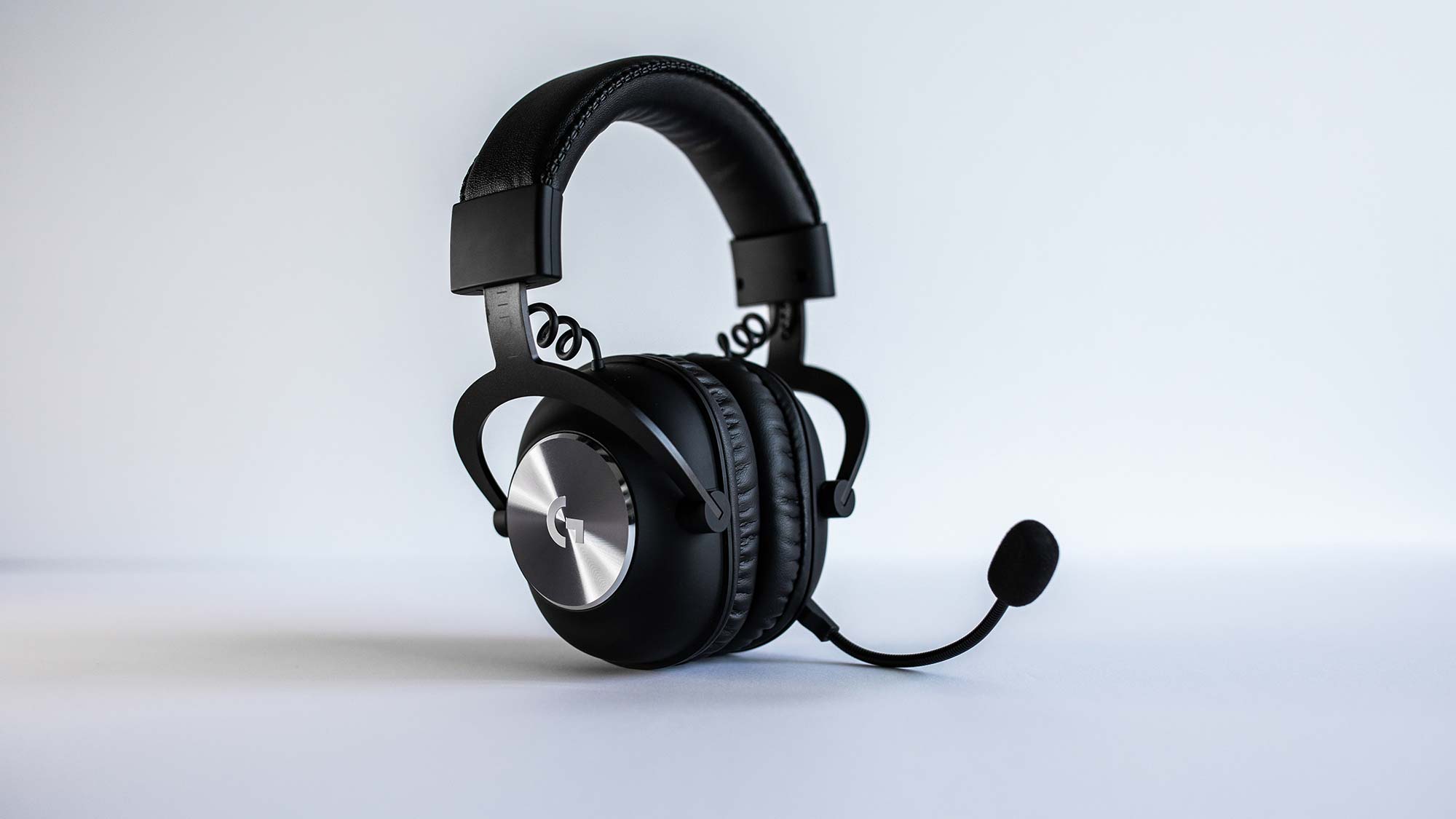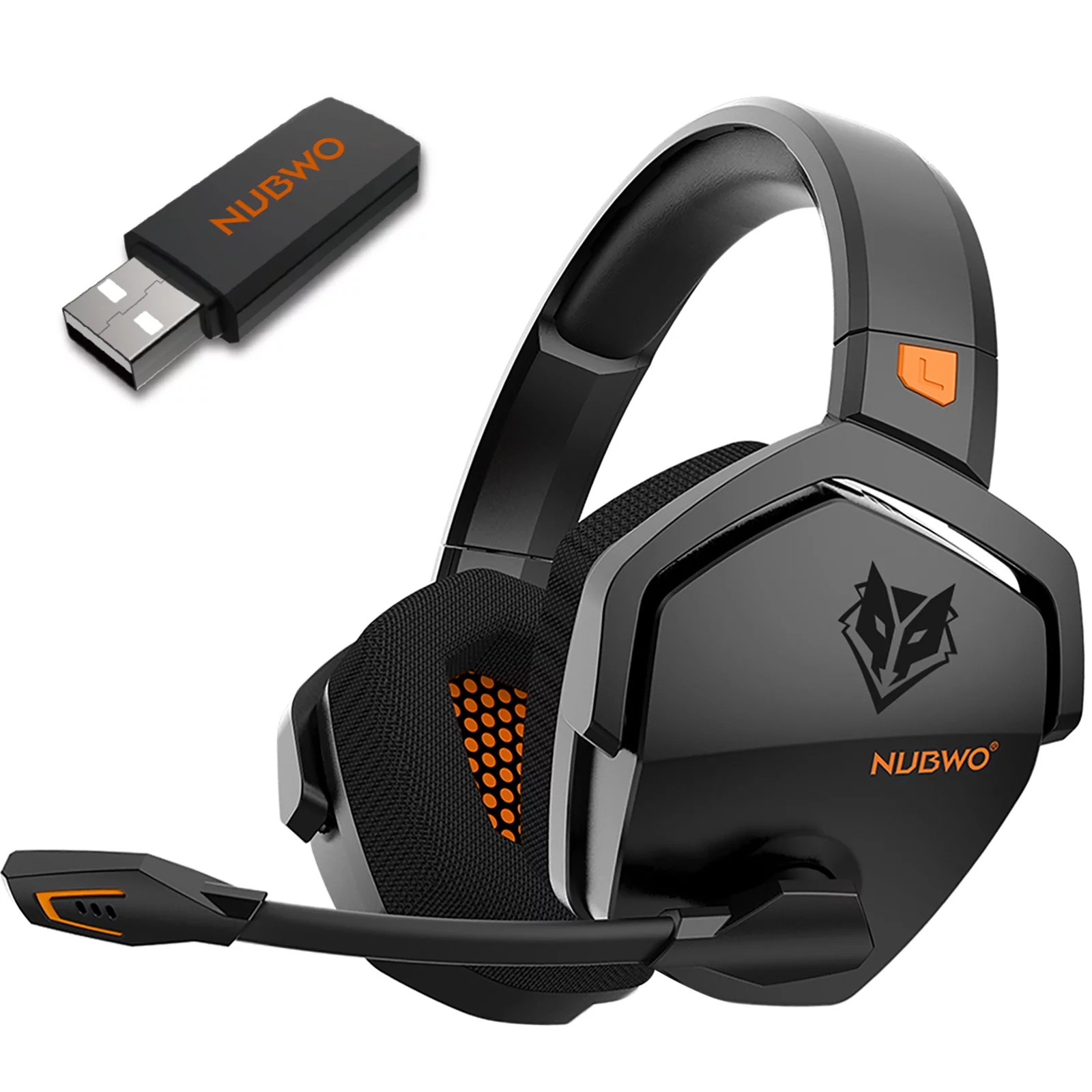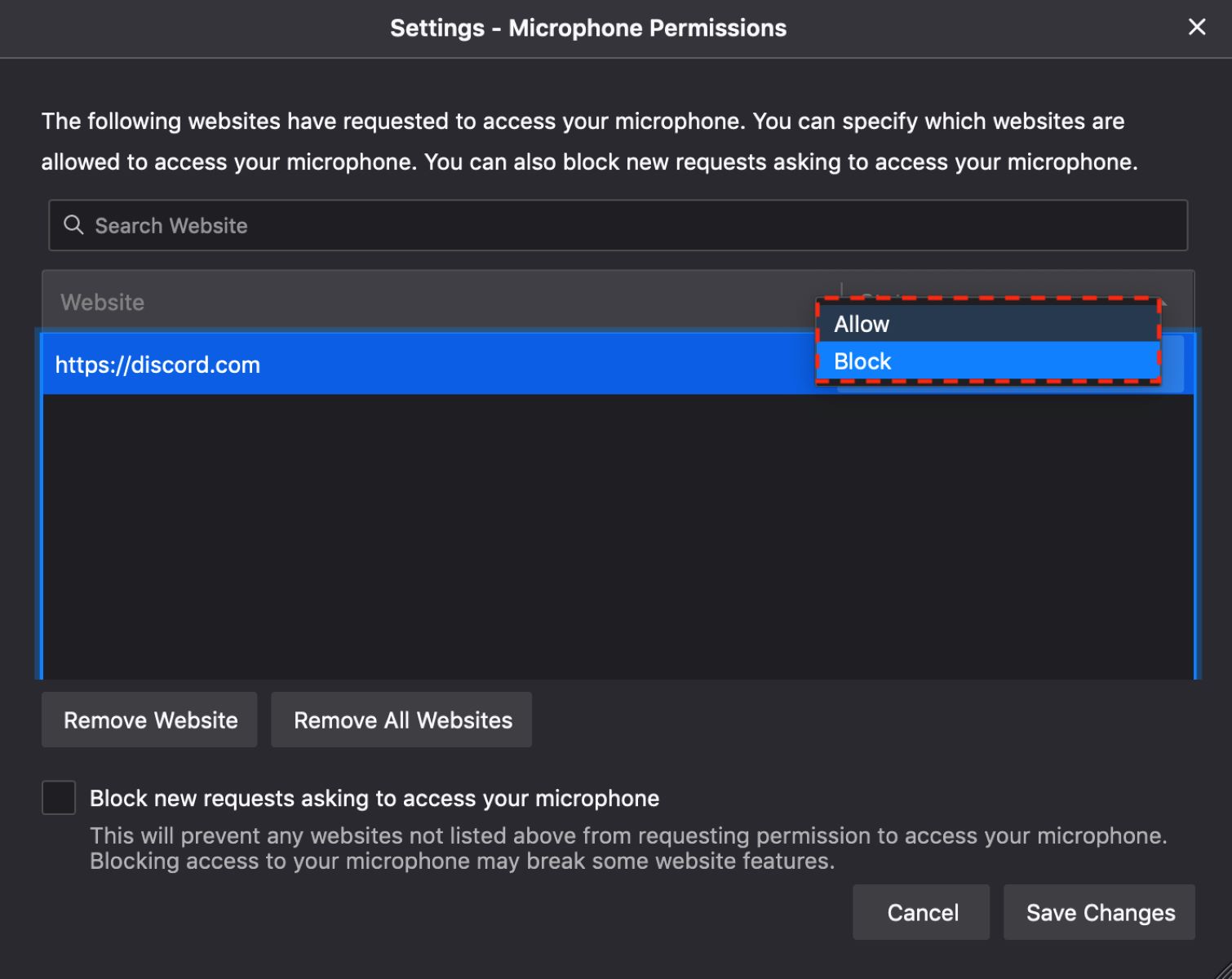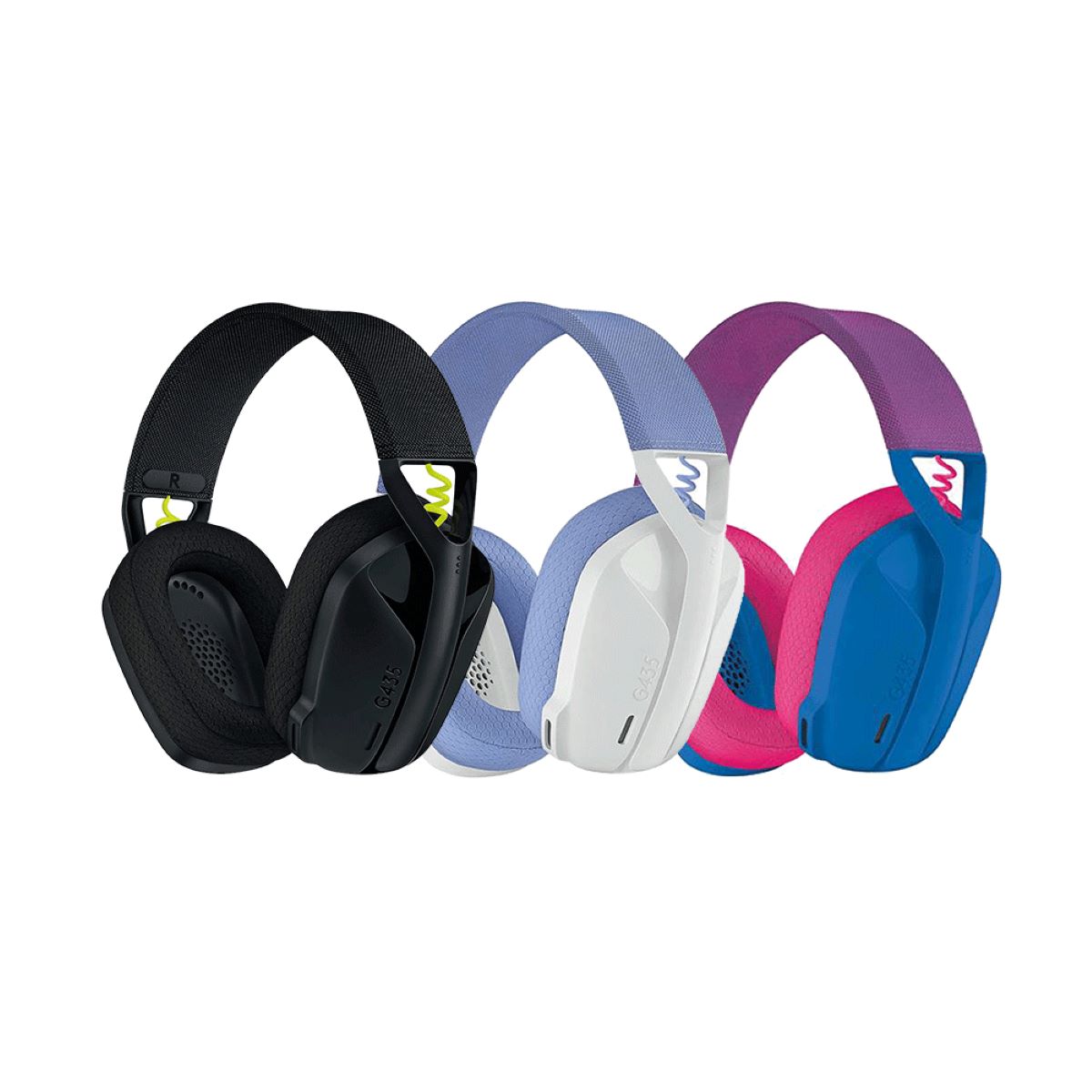Introduction
Dealing with mic issues during a lively conversation on Discord can be exasperating. Whether you're in the midst of a heated gaming session or engaging in a virtual team meeting, a malfunctioning microphone can disrupt the flow of communication and hinder your overall experience. However, fret not, as this comprehensive guide is designed to help you troubleshoot and resolve the pesky mic problems that may arise while using Discord.
In the following sections, we will delve into various troubleshooting methods to address mic issues. From checking hardware connections to adjusting mic settings in Discord, updating audio drivers, testing your mic on other platforms, and identifying potential software conflicts, we've got you covered. By following the steps outlined in this guide, you can regain seamless communication and ensure that your Discord experience remains uninterrupted by mic-related setbacks.
So, if you've ever found yourself grappling with mic problems on Discord, you're in the right place. Let's embark on this troubleshooting journey together and equip ourselves with the knowledge and tools needed to conquer those pesky mic issues.
Checking Hardware Connections
Ensuring that your hardware connections are secure is a fundamental step in troubleshooting mic issues on Discord. A loose or faulty connection can lead to disruptions in audio input, causing your mic to malfunction. To address this, follow these steps to meticulously inspect and rectify any potential hardware-related issues:
-
Inspect the Physical Connections: Begin by examining the physical connections of your headset or microphone. Check if the audio jack is properly inserted into the designated port on your computer or gaming console. If you are using a USB microphone, ensure that it is securely plugged into a functional USB port.
-
Examine the Headset/Mic Cable: Next, carefully inspect the cable of your headset or microphone for any signs of damage, such as fraying or exposed wires. A damaged cable can impede the transmission of audio signals, leading to mic issues. If you detect any damage, consider replacing the cable to restore optimal functionality.
-
Test with Alternative Ports: If you suspect that the port you are using may be faulty, try connecting your headset or microphone to an alternative port on your device. This simple step can help identify whether the issue stems from a specific port or the hardware itself.
-
Check for Compatibility: Verify that your headset or microphone is compatible with your device. Some headsets may require specific adapters or drivers to function seamlessly with certain devices. Refer to the manufacturer's guidelines to ensure compatibility and make any necessary adjustments.
By meticulously examining and rectifying hardware connections, you can eliminate potential causes of mic issues related to physical connectivity. Once you have thoroughly checked and addressed any hardware-related concerns, you can proceed to the next steps in the troubleshooting process to further pinpoint and resolve mic issues on Discord.
Adjusting Mic Settings in Discord
Adjusting the mic settings within the Discord application is a pivotal step in troubleshooting mic issues. Discord offers a range of customizable options that allow users to fine-tune their mic settings for optimal performance. By navigating through these settings, you can address common mic-related challenges and ensure that your voice is transmitted clearly to fellow users. Here's a detailed exploration of the steps involved in adjusting mic settings in Discord:
-
Accessing User Settings: To begin, launch the Discord application and click on the gear icon located at the bottom left corner of the screen. This will open the User Settings menu, where you can access a plethora of customization options, including mic settings.
-
Selecting Voice & Video: Within the User Settings menu, navigate to the "Voice & Video" tab located on the left-hand side. This section houses a variety of settings related to voice communication, including input and output device configurations.
-
Input Device Selection: Under the "Input Device" section, ensure that the correct microphone is selected from the dropdown menu. If you are using an external headset or microphone, it should be listed as an available input device. Select the appropriate device to designate it as the primary input source for voice transmission.
-
Input Sensitivity: Discord offers an input sensitivity slider that allows users to adjust the mic sensitivity based on ambient noise levels. By moving the slider to the right, the mic becomes more sensitive, capturing even subtle sounds. Conversely, sliding it to the left increases the threshold required to activate the mic, filtering out background noise.
-
Advanced Settings: For users seeking further customization, Discord provides advanced settings such as noise suppression, echo cancellation, and input mode options. These features enable users to fine-tune their mic settings based on their specific preferences and environmental conditions.
-
Testing Mic Input: After making adjustments to the mic settings, it's crucial to test the input to ensure that the changes have been effective. Discord offers a convenient "Let's Check" feature that allows users to preview their mic input and make real-time adjustments to the settings.
By meticulously navigating through the mic settings in Discord and making the necessary adjustments, users can optimize their mic performance and mitigate common issues such as low input volume, background noise interference, or distorted voice transmission. This proactive approach empowers users to tailor their mic settings to suit their individual preferences and environmental conditions, ultimately enhancing the overall communication experience on Discord.
Updating Audio Drivers
Ensuring that your audio drivers are up to date is a crucial step in troubleshooting mic issues on Discord. Audio drivers serve as the bridge between your operating system and audio hardware, facilitating the seamless functioning of microphones and other audio input devices. Outdated or corrupted audio drivers can lead to a myriad of audio-related issues, including mic malfunctions. By updating your audio drivers, you can potentially resolve compatibility issues, enhance audio performance, and address mic-related challenges. Here's a detailed exploration of the steps involved in updating audio drivers to mitigate mic issues:
-
Identifying the Audio Hardware: Begin by identifying the specific audio hardware associated with your microphone. Whether you are using an integrated microphone, an external headset, or a dedicated microphone, it's essential to ascertain the make and model of the audio device. This information will aid in locating the appropriate drivers for your hardware.
-
Accessing Device Manager: On Windows operating systems, accessing the Device Manager is a key step in managing and updating hardware drivers. To open Device Manager, right-click on the Start menu and select "Device Manager" from the context menu. Within Device Manager, navigate to the "Sound, video and game controllers" section to locate your audio device.
-
Checking for Driver Updates: Once you have identified your audio device within Device Manager, right-click on the device and select "Update driver." Windows will then prompt you to choose between automatically searching for updated driver software online or browsing your computer for driver software. Opt for the automatic search to allow Windows to seek the latest driver updates from its database.
-
Downloading from Manufacturer's Website: Alternatively, you can visit the official website of the audio device's manufacturer to manually download the latest driver updates. Manufacturers often provide driver downloads and support documentation on their websites, allowing users to access the most current versions of the required drivers.
-
Installation and Reboot: After downloading the updated audio drivers, follow the installation prompts to complete the update process. Once the installation is finalized, it's advisable to reboot your computer to ensure that the updated drivers are fully integrated into the system.
By proactively updating your audio drivers, you can potentially resolve mic issues stemming from outdated or incompatible drivers. This proactive approach not only addresses mic-related challenges on Discord but also contributes to overall audio stability and performance across various applications and platforms.
Testing Your Mic on Other Platforms
Testing your mic on other platforms serves as a valuable troubleshooting step to isolate mic-related issues and determine whether the problem is specific to Discord or extends to other applications and platforms. By conducting mic tests on alternative platforms, you can gain insights into the performance and functionality of your microphone in diverse environments. This method enables you to discern whether the mic issues are inherent to Discord or indicative of broader compatibility or hardware concerns. Here's a comprehensive exploration of the process involved in testing your mic on other platforms:
1. Utilizing Built-in Voice Recorder Apps
Begin by utilizing the built-in voice recorder apps available on your computer or mobile device. Most operating systems feature pre-installed voice recording applications that allow users to capture and playback audio recordings. Utilize these native apps to record a brief audio clip using your microphone and subsequently play it back to assess the clarity and quality of the recorded audio. This simple test provides an initial indication of the microphone's functionality outside of Discord.
2. Engaging in Video Calls on Alternative Platforms
Participate in video calls or voice chats on alternative platforms such as Skype, Zoom, or Microsoft Teams. Engaging in conversations on these platforms allows you to gauge the performance of your microphone in real-time communication scenarios. Pay attention to the feedback from other participants regarding the clarity and volume of your voice, as this can offer valuable insights into the functionality of your microphone across different applications.
3. Testing Voice Input in Online Applications
Explore online applications or websites that utilize voice input, such as speech-to-text tools or voice messaging platforms. Engage with these applications to assess the accuracy and responsiveness of your microphone's input. By dictating messages or commands and observing the system's recognition of your voice, you can evaluate the consistency and reliability of your microphone's performance in diverse online environments.
4. Comparing Mic Behavior Across Platforms
Compare the behavior of your microphone across different platforms and applications, noting any discrepancies in performance or functionality. Pay attention to factors such as input volume, background noise suppression, and overall clarity of voice transmission. Documenting these observations can aid in identifying patterns or inconsistencies in the microphone's behavior, providing valuable insights for the troubleshooting process.
By systematically testing your microphone across various platforms and applications, you can gain a comprehensive understanding of its performance and behavior beyond the confines of Discord. This proactive approach enables you to pinpoint the source of mic-related issues and make informed decisions regarding potential solutions, ensuring that your microphone functions optimally across a spectrum of communication platforms.
Checking for Software Conflicts
When troubleshooting mic issues on Discord, it's crucial to consider the potential impact of software conflicts on the functionality of your microphone. Software conflicts can arise from a variety of sources, including conflicting applications, outdated system software, or settings that interfere with the proper operation of the microphone. Addressing these conflicts is essential to ensure seamless communication on Discord and other platforms. Here's a detailed exploration of the steps involved in checking for software conflicts and resolving them effectively.
-
Identifying Conflicting Applications: Begin by identifying any applications that may interfere with the operation of your microphone. Certain applications, particularly those with audio or voice-related features, can conflict with Discord and impede the proper functioning of the microphone. Take note of any applications that were recently installed or updated, as they may be contributing to the conflict.
-
Reviewing System Settings: Navigate to the system settings on your computer or device to review configurations that may impact microphone functionality. Pay particular attention to privacy settings, audio input/output configurations, and system permissions related to microphone access. Ensure that the settings align with Discord's requirements for seamless microphone operation.
-
Updating System Software: Outdated system software, including operating system updates and firmware, can contribute to software conflicts that affect the microphone. Check for pending system updates and ensure that your device's software is up to date. Keeping the system software current can mitigate potential conflicts and enhance overall compatibility with Discord.
-
Disabling Background Processes: Background processes and services running on your computer can sometimes interfere with microphone functionality. Use the Task Manager or equivalent system monitoring tools to identify and temporarily disable non-essential processes that may be consuming system resources or conflicting with audio input/output operations.
-
Testing in Safe Mode: Booting your computer into Safe Mode allows you to assess microphone functionality in a minimal, conflict-free environment. By entering Safe Mode, you can isolate potential software conflicts and determine whether the microphone operates without issues in this stripped-down system state. This diagnostic step can provide valuable insights into the impact of software conflicts on microphone performance.
-
Utilizing Diagnostic Tools: Consider utilizing diagnostic tools or troubleshooting utilities provided by your operating system or third-party software to identify and resolve software conflicts. These tools can scan for system inconsistencies, identify conflicting applications or drivers, and offer recommendations for resolving software-related issues affecting the microphone.
By systematically addressing potential software conflicts through these steps, users can mitigate the impact of conflicting applications, outdated system software, and settings that hinder microphone functionality. This proactive approach empowers users to create an environment conducive to seamless communication on Discord, free from the disruptions caused by software conflicts.
Conclusion
In conclusion, troubleshooting mic issues on Discord involves a systematic approach that encompasses hardware inspections, mic settings adjustments, driver updates, cross-platform testing, and software conflict resolution. By meticulously addressing each facet of the troubleshooting process, users can overcome the challenges posed by malfunctioning microphones and ensure uninterrupted communication within the Discord ecosystem.
The initial step of checking hardware connections serves as the foundation for resolving mic issues, emphasizing the importance of secure physical connections, cable integrity, and compatibility verification. By meticulously examining and rectifying hardware connections, users can eliminate potential causes of mic issues related to physical connectivity, laying the groundwork for further troubleshooting.
Adjusting mic settings within the Discord application emerges as a pivotal step, offering users a range of customizable options to fine-tune input sensitivity, noise suppression, and other parameters. This proactive approach empowers users to tailor their mic settings to suit their individual preferences and environmental conditions, ultimately enhancing the overall communication experience on Discord.
Furthermore, the significance of updating audio drivers cannot be overstated, as it directly impacts the compatibility and performance of microphones. By ensuring that audio drivers are up to date, users can potentially resolve compatibility issues, enhance audio performance, and address mic-related challenges not only on Discord but across various applications and platforms.
The process of testing microphones on alternative platforms serves as a valuable diagnostic tool, allowing users to discern whether mic issues are specific to Discord or indicative of broader compatibility or hardware concerns. This method enables users to gain insights into the performance and functionality of their microphones in diverse environments, aiding in the identification of potential sources of mic-related issues.
Lastly, addressing software conflicts is essential to ensure seamless communication on Discord and other platforms. By identifying conflicting applications, reviewing system settings, updating system software, and utilizing diagnostic tools, users can mitigate the impact of conflicting software on microphone functionality, creating an environment conducive to uninterrupted communication.
In essence, by following the comprehensive troubleshooting methods outlined in this guide, users can equip themselves with the knowledge and tools needed to conquer mic issues on Discord. This proactive and systematic approach not only resolves immediate mic-related challenges but also empowers users to optimize their communication experience, fostering seamless interactions within the vibrant Discord community.







